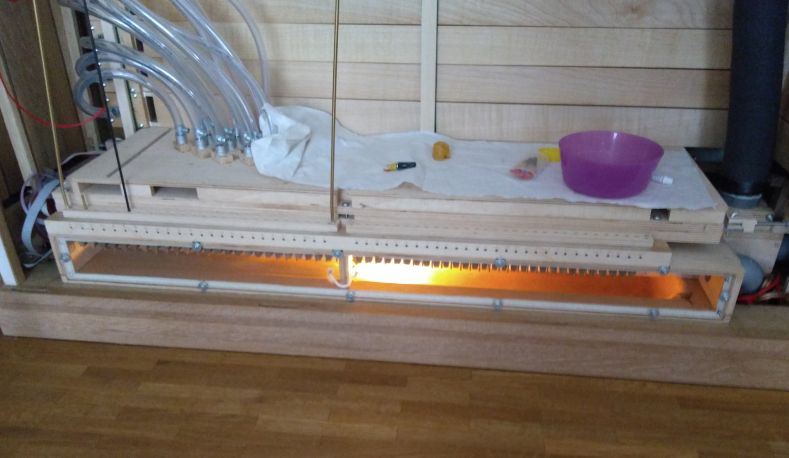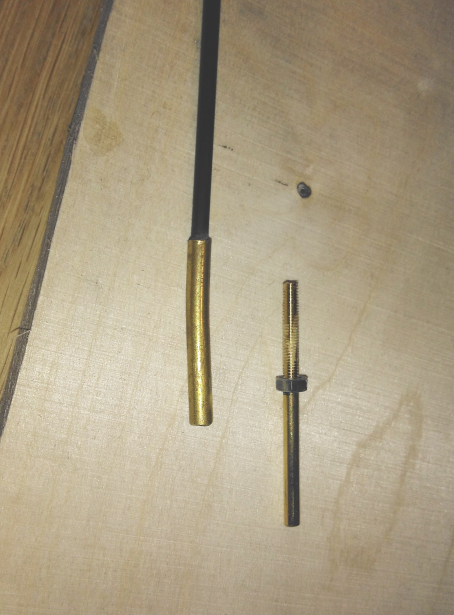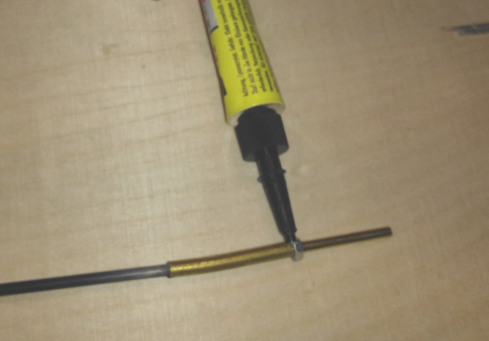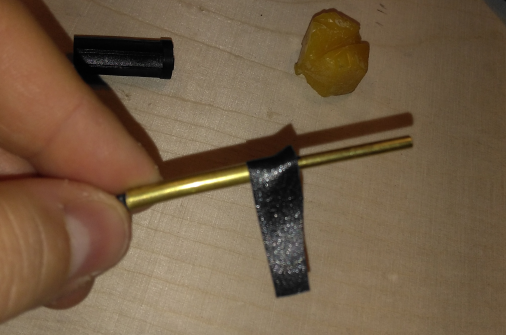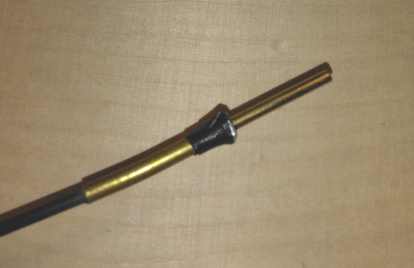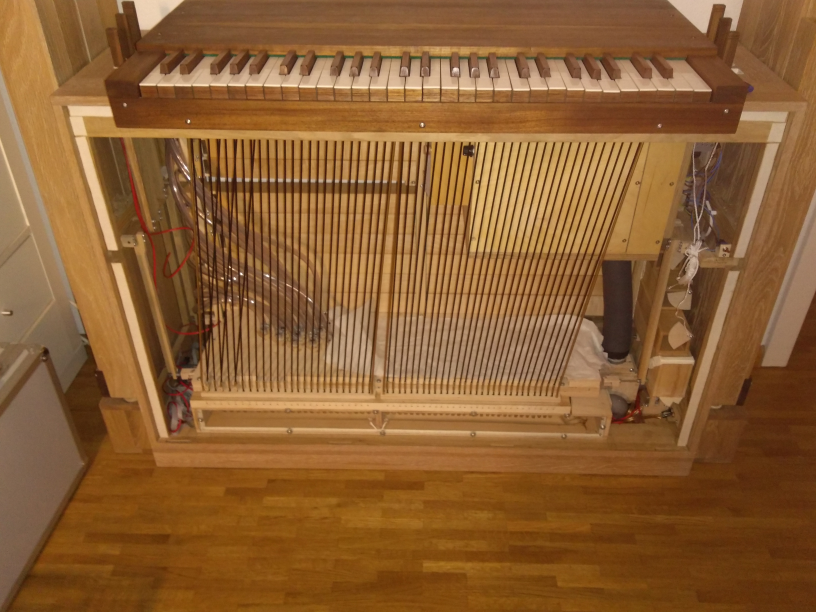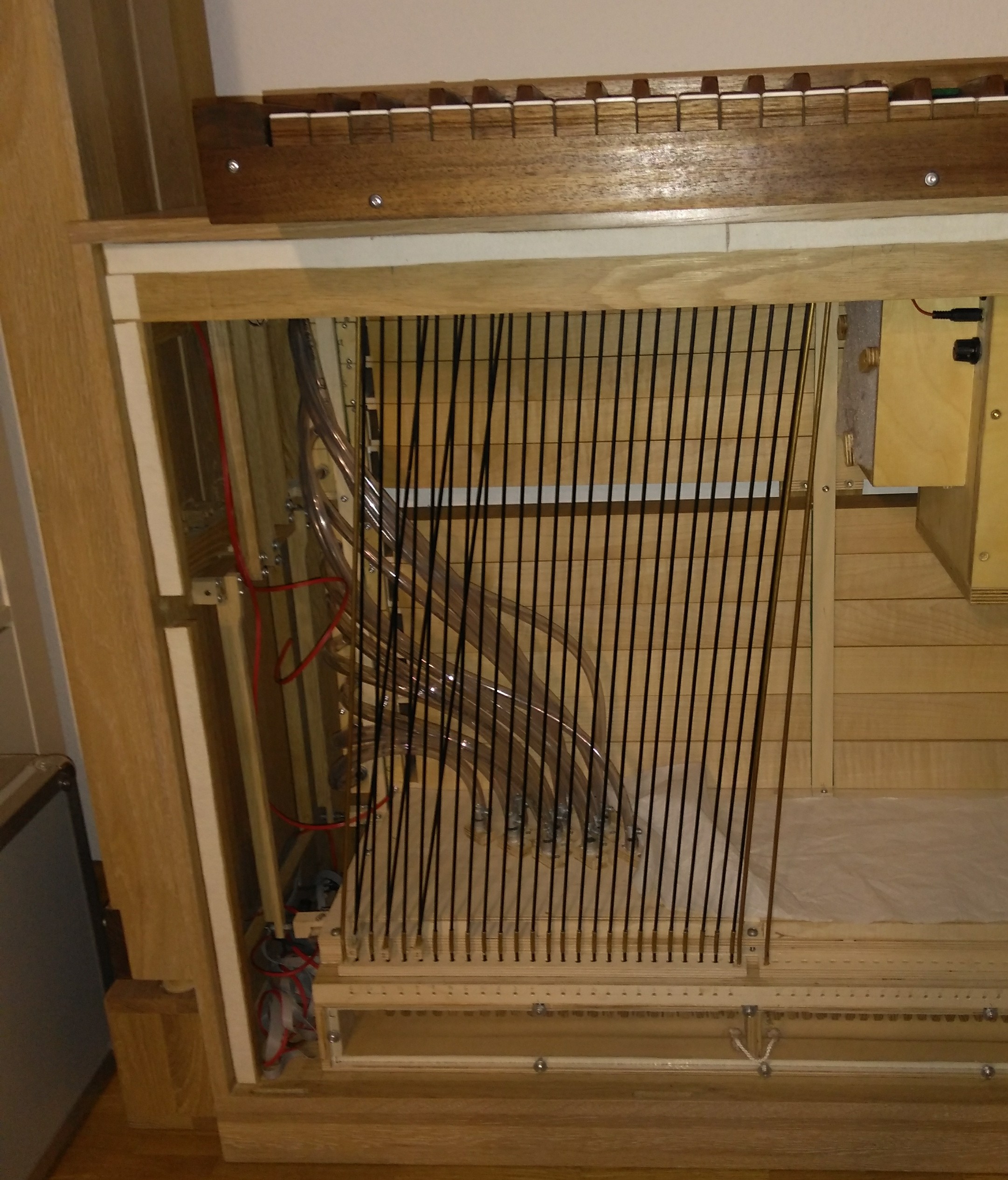Hallo liebe Orgelfreunde,
die tiefe Oktave ertönt jetzt auch! Ich habe die Reflexlichtschranken angeschlossen, die die Stecherbewegung abnehmen und elektrisch weiterleiten. Ich habe ein bisschen experimentiert und als recht gut haben sich kleine schwarz/weiße "Fähnchen" erwiesen. Sieht die Reflexlichtschranke "schwarz", ertönt kein Ton, sieht sie "weiß", ertönt der Ton. Hier ein Bild von der Montage dieser Fähnchen. Sie sind auf die Holzklötzchen geklebt am unteren Ende der Stecher. Gegen Verdrehen sind die Klötzchen gesichert durch zusätzliche Abschnitte aus Alurohr die ich zwischen den Klötzchen platziert habe:

Die Aluröhrchen musste ich etwas in eine ovale Form "quetschen" damit sie zwischen den Klötzchen Platz finden. Aber es hat ganz gut geklappt; habe sie dann mit einer Schraube von oben fixiert.
Als nächstes kamen die Reflexlichtschranken dran. Ich habe jede auf einem kleinen Streifen Lochrasterplatine festgelötet und diese Streifen mit einem Langloch versehen, so dass man den Schaltzeitpunkt regulieren kann. Alle Streifen sind auf einer Holzleiste festgeschraubt (Schraube durch Langloch) und diese Holzleiste ist drehbar an der Windlade angebracht so dass man zu Wartungszwecken alle Lichtschranken zur Seite schwenken kann. Dadurch, dass keine mechanische Verbindung besteht, kann man, wie zuvor auch, den Rahmen mit den Stechern nach oben hin entnehmen und kommt später zum Stimmen leicht an die Pfeifen dran, obwohl die Stecher vor den Pfeifen verlaufen.
Hier das Bild mit den Lichtschranken:

Die Lichtschranken sind etwa 5 mm von den Fähnchen entfernt. Und hier noch ein Video mit der ganzen Sache in Aktion:
https://www.youtube.com/watch?v=BMTL5LrkWho
Als nächstes werde ich die Basspfeifen, die nun auch spielbar sind, intonieren. Sie sind noch sehr unterschiedlich laut und die Kernspaltweite noch nicht endgültig definiert. Jetzt kann ich die Lautstärke optimal an die Innenpfeifen anpassen.
Gruß,
Jens




